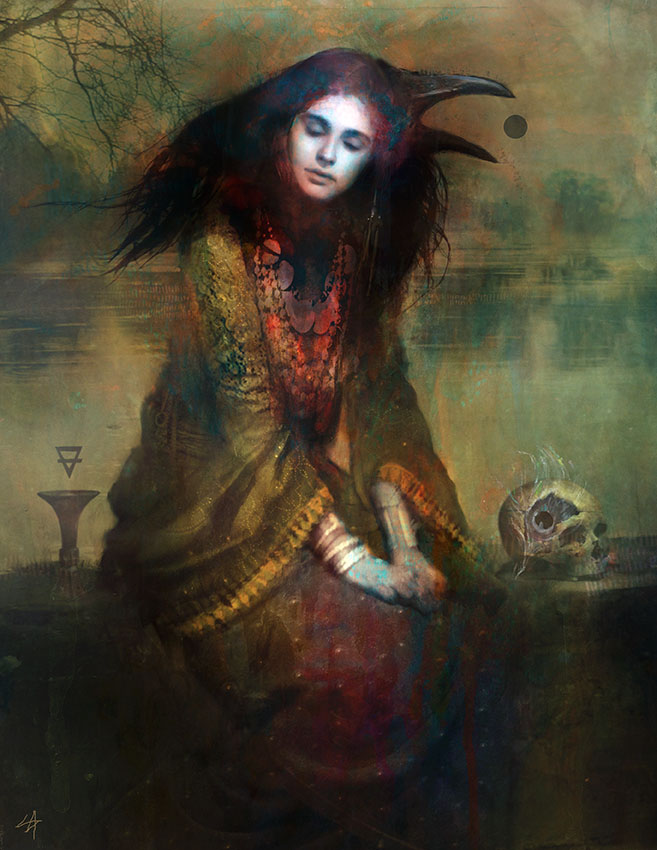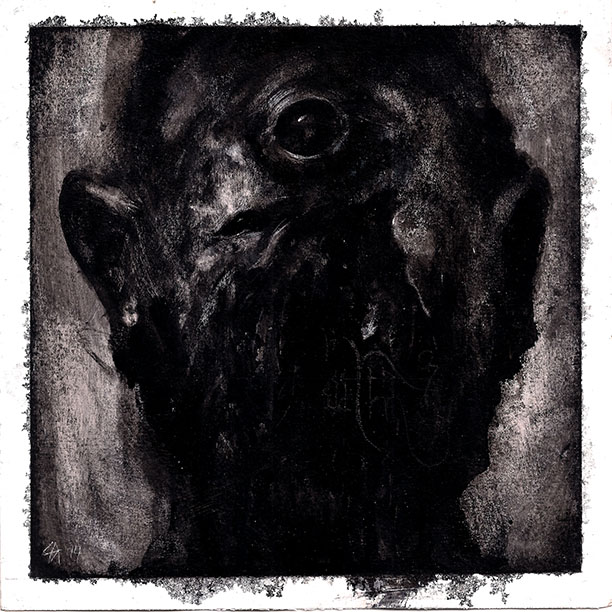EDITOR’S NOTE: We have been lucky enough to work with painter Samuel Araya many times over the years, from his surreal superheroes in the first edition of Wild Talents to his gorgeous paintings in the whimsically creepy Puppetland. When he and my partner Dennis Detwiller started talking about an illustrated edition of The King in Yellow, I was immediately enthusiastic.You can order our deluxe edition of The King in Yellow at shop.arcdream.com. I want to thank Sam for his generosity in sharing these thoughts about his fascinating creative process in this project. —Shane Ivey
Much like a character in Chambers’ seminal work, I have obsessed over The King in Yellow since I read it as a teenager in pursuit of all things Lovecraftian. Read after read, tale after tale, year after year, the book fed my imagination with dark and decadent scenes.
In 2014, while I was thinking, “Why has nobody ever commissioned me to illustrate The King in Yellow?,” the show True Detective hit and fueled my motivation to pursue my own vision of the text. At the time, due to my practice in the occult, I was immersing myself in the symbology of alchemy. I see the occult as a powerful symbolic system to process human experience, and decided to apply the structure of the magnum opus of the alchemist into the work of Chambers. Cassilda’s song, for example, was nigredo, the darkening of materials, the dark night of the soul, and thus the art reflects on symbols of decay and putrefaction: a fractured skull, the raven, the alchemical symbol of earth.
My intention was also to steer away from what has been done before. While an obvious influence of Beksinski and Bocklin permeates my work, I tried not to repeat the same images we have seen in the many gaming adaptations of the text. I didn’t wanted the figure of the King in Yellow to stay the same in every image. On the contrary, I wanted it to portray the multiple interpretations that stayed with me over the years. My take was visceral, hopefully to enrich the reader’s experience. I wanted to take us all in the terrible hands of a work of literature whose themes of the tragic, the weird, and the ambiguous merge with the decadent and the magical.
The black-and-white paintings were done in order to counterpoint the realistic, detailed yet surreal color works. I prepared a surface with white acrylic paint, and then dropped thin coats of black paint in irregular patterns. I attacked those with various utensils in order to create a rich, interesting surface. Faces and shapes would start to emerge. These became the royal lineage of Carcosa and characters that have only a passing mention in the book. This method of painting resonated again with certain magickal practices, where particular spirits or intelligences appear in the smoke of burning incense and oils—not to mention the process in which the materials for the philosopher’s stone turn from black to white, nigredo to albedo.
These connections are to me a gateway for the intellect and imagination, the search for new forms of beauty through the experience of all forms of art. Chambers was indeed right. The King in Yellow is a cursed book, a book that curses the reader’s mind’s eye with beauty like no other. I sincerely hope my work at least suggests a glimpse of that, and at the same time brings you joy and enriches your journey through each page.
Samuel Araya
Asuncion, 2017



4 thoughts on “The Darkening of Materials: Samuel Araya on the magic of painting “The King in Yellow””